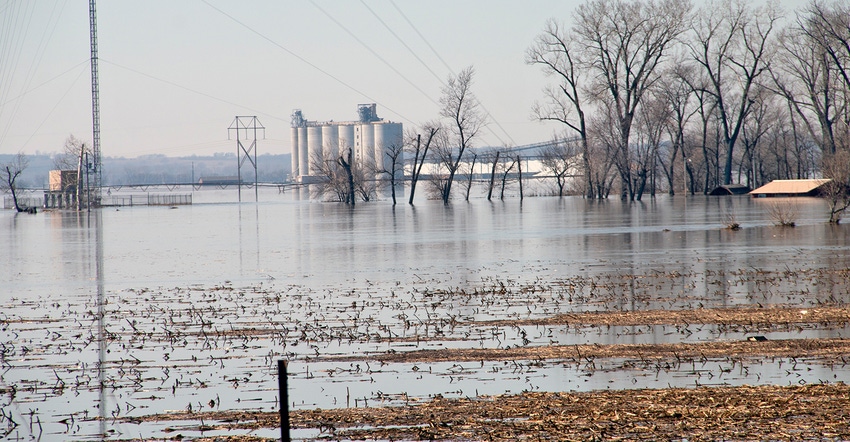April 24, 2019

Every year, farming has its unique challenges from price volatility to Mother Nature.
Last summer, Missouri faced extreme drought conditions, and this spring already has brought severe flooding challenges. The agricultural damage hasn’t yet been quantified, but it stretches from Atchison County to Saline County along the Missouri River, and from Clark County to Lincoln County along the Mississippi River.
In March, Gov. Mike Parson declared a state of emergency in Missouri while he and I were touring flood-damaged areas. It’s not often that agriculture can voice its needs during an emergency, but that was important to him. This sent a strong message to those affected, especially those in agriculture, that farmers, ranchers and rural communities will be a part of this recovery process.
Challenges ahead
What makes this year’s challenge different is the timing. With typical wet weather still headed our way in May, 114 levees have been breached before planting could even get started. This leaves many communities in the lower Missouri River basin unprotected until repairs can be made.
Some already have begun comparing our flooding conditions with not only 2011 but also 1993. As I write this column, we know that Missouri’s Farm Service Agency is working hard to gather agriculture damage estimates but was delayed until high waters receded.
Initial agriculture estimates show that Nebraska’s damage could reach more than $850 million, and Iowa’s damage likely will surpass $215 million. While Missouri hasn’t seen the devastating livestock loss that Nebraska has, we know that large amounts of stored grain have been surrounded by water and planting will be difficult — if not impossible — for some Missouri farmers.
Awaiting assistance
Photos online have shown massive grain bins bursting, fields covered by sediment and — most importantly — communities coming together to help their neighbors. Even in the middle of such devastation, it’s been inspiring to many of us that agriculture always comes together to overcome those obstacles.
So that leaves us with one question: What’s next?
We anxiously await agriculture damage estimates from Missouri’s FSA office, which will guide many farmers to the right recovery programs, and we know that it should be a short-term priority to rebuild breached or compromised levees as quickly as possible.
We also have some good news to report. Sen. Dan Hegeman, R-Cosby, appropriations chairman from northwest Missouri, put forward his recommended budget with flood relief funding that includes $5 million for infrastructure repair and $8 million for emergency grants for Missouri’s 2020 budget.
At the federal level, FSA’s Emergency Conservation Program has been made available to Atchison and Holt counties, and we are working closely with our federal partners to secure any and all disaster declarations.
Moving forward
Missouri is taking a leadership role in securing recovery resources through the Federal Emergency Management Agency and USDA, identifying what improvements should be made to our flood control systems and how we might prevent these instances moving forward. Two weeks ago, Parson met with the governors of Nebraska and Iowa to create a unified plan for how they will work with the U.S. Army Corps of Engineers to prioritize flood control and rebuild critical infrastructure for the Midwest.
We know one thing: Missouri’s recovery process will be more of a marathon than a sprint. Our team at the Department of Agriculture will continue to work closely with governor’s office, the State Emergency Management Agency, Missouri’s FSA, the Missouri Department of Natural Resources and agriculture organizations to make sure that the needs of our rural communities, farmers and ranchers are prioritized.
Chinn is the director of the Missouri Department of Agriculture and a hog producer from Clarence, Mo.
About the Author(s)
You May Also Like




